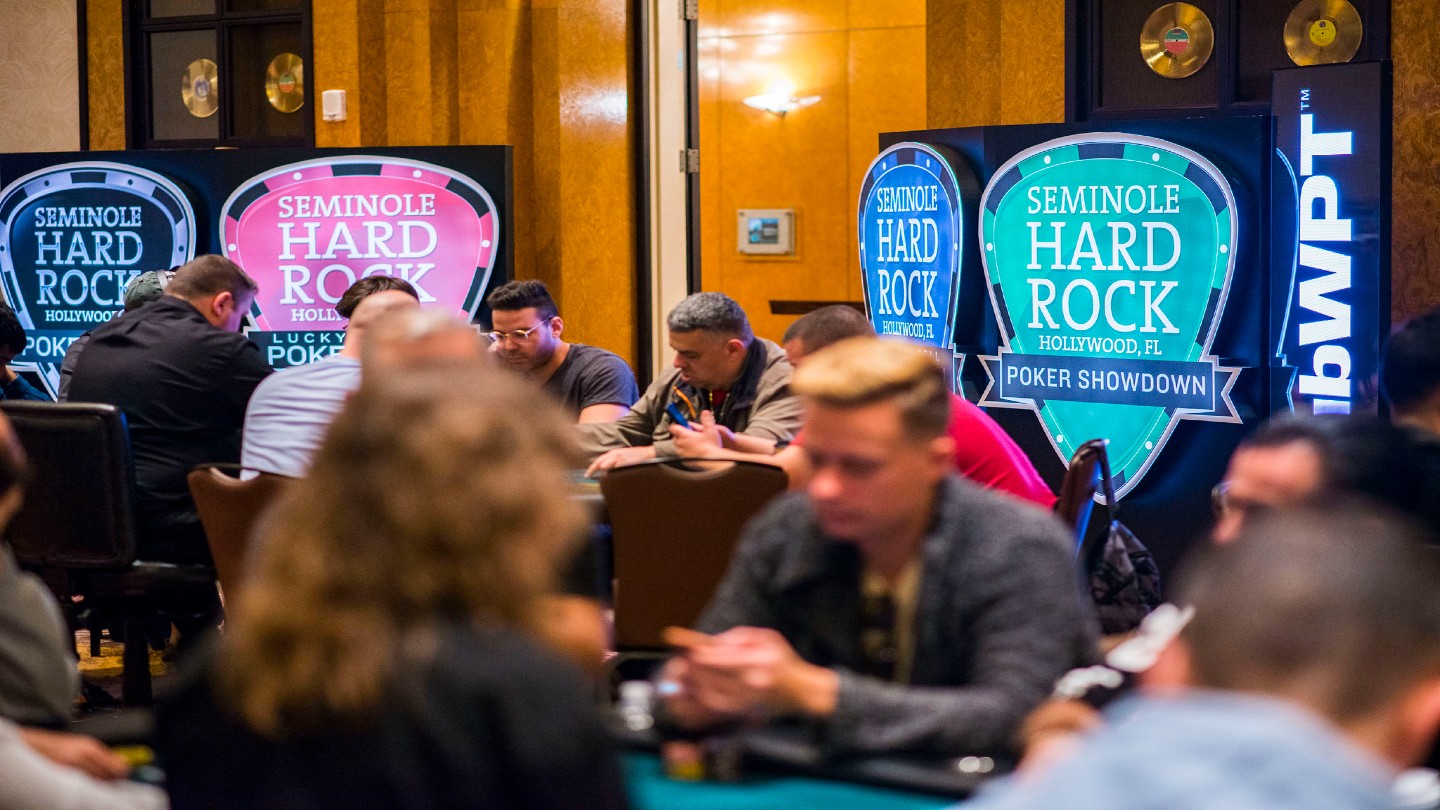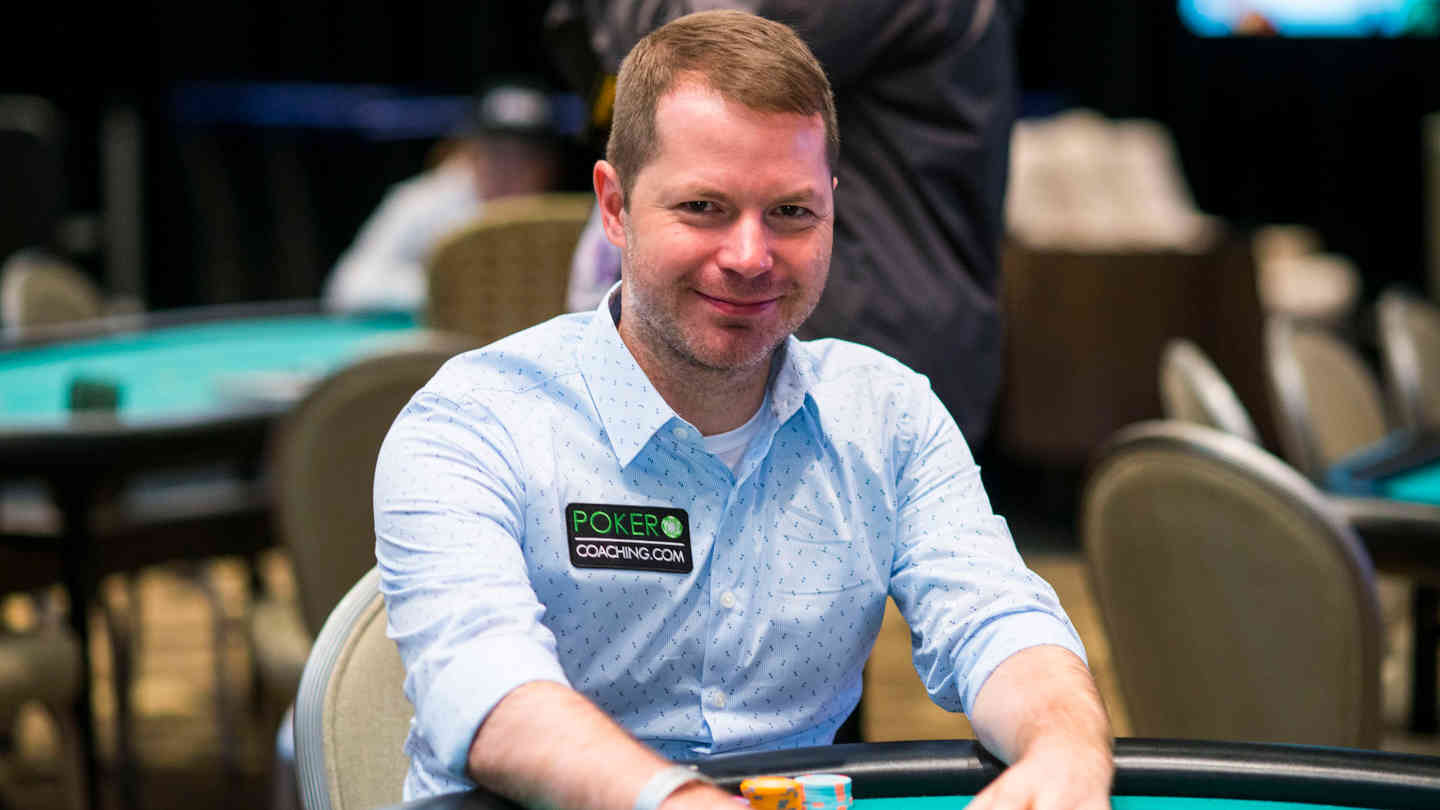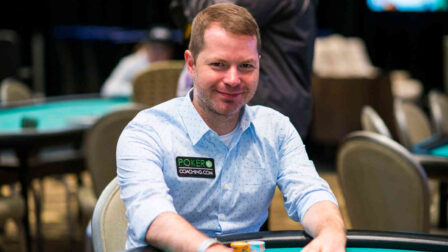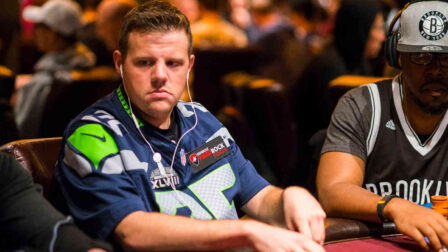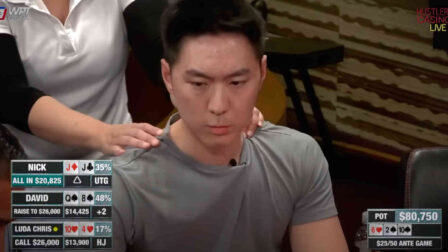Poker Bet Sizing Strategy – Get Best Value Out of Your Bets
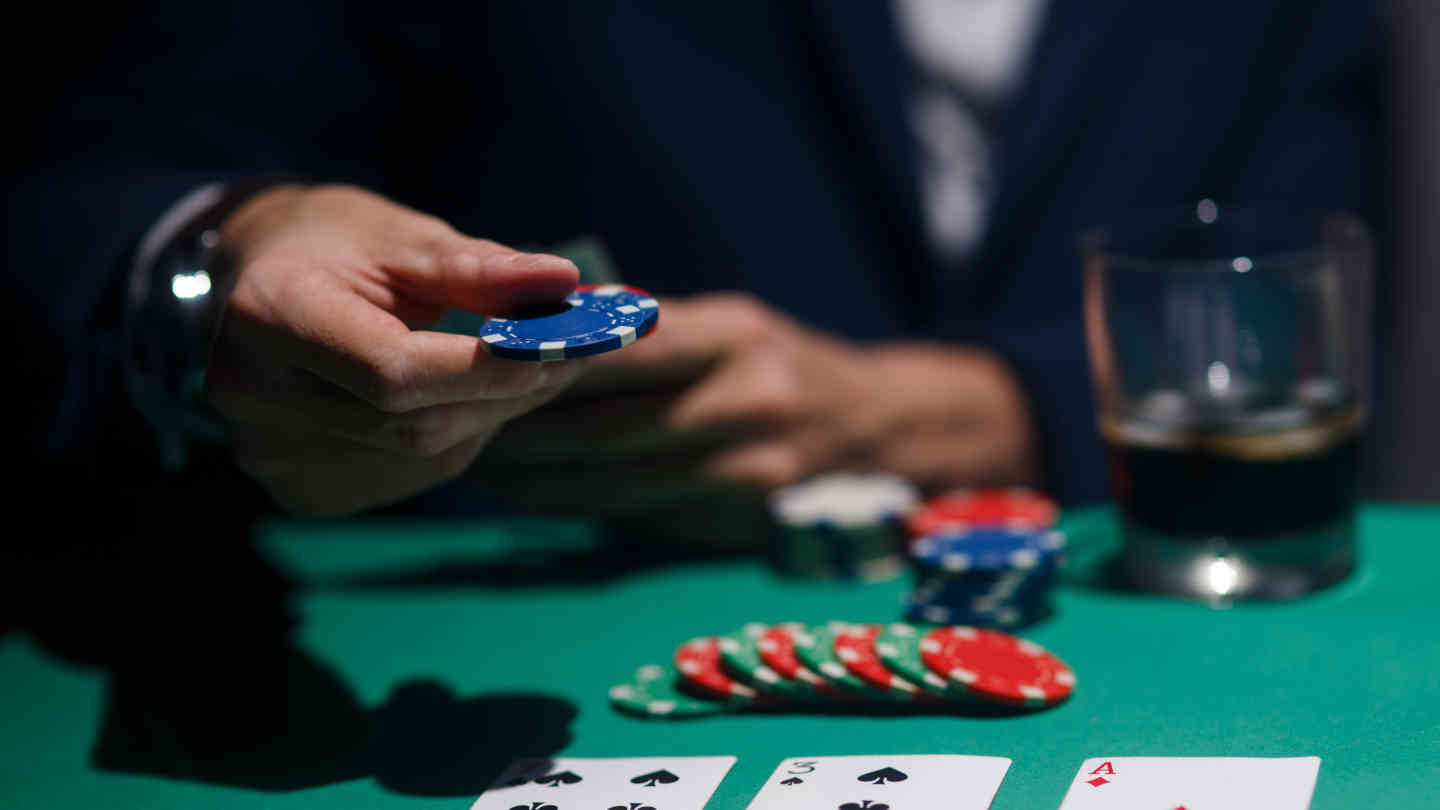
9 minutes
Last Updated: August 28, 2023
Being a successful poker player means mastering many different skills individually and finding a way to apply them all at the tables to get the best possible outcomes from the hands you are dealt.
This, however, is easier said than done. There are many different skills that make up the poker skillset, and poker bet sizing is one of the most important ones.
Understanding poker betting strategy and making the right size bets in different situations is a complete game changer and is the one thing that many poker players miss in their game.
If you are looking to learn how to bet in poker, keep reading and find our top 10 tips for poker bet sizing that you wish you had known earlier.
Bet Sizing Tip #1 – Raise Larger Out of Position
When first introduced to poker, many players are told by another, more experienced player to raise to 3 BBs before the flop or informed by another that a min-raise is the superior bet size. Unfortunately, most seem to take this tip as a norm and never deviate from it.
The reality is that there is no single perfect raise size before the flop, and there are many elements that can impact the right pre-flop raise sizing.
Your own position is a key element in making this decision, as your pre-flop raise will determine the outcomes on every subsequent street.
When out of position, you will have a much harder time playing the flop, turn, and river, which is why you want to get more folds from your opponents right now.
This also applies to your 3-betting size, as making a bigger 3-bet will allow you to win more pots right now. Going with a smaller 3-bet will allow your opponent to defend with a wide range in position.
Bet Sizing Tip #2 – Consider Flop Texture Before C-betting
Continuation bet (c-bet) is one of the most common plays made in poker, and it is a part of any successful poker betting strategy.
A common bet sizing mistake in poker that players make is that they don’t choose the appropriate bet sizes for their c-bets.
In modern poker, players tend to size up their continuation bets based on the texture of the board, with small sizes generally preferred on static board textures and larger sizes preferred on dynamic boards.
For instance, you will want to c-bet small on a board of K♦7♣2♠ and larger on Q♠J♠7♣, regardless of your actual holding.

On a static board, a small bet will get you calls from weak hands that will have to fold the turn, along with many folds from the numerous poker hands that have completely missed the board.
On the more dynamic boards, you will want to have fewer c-bets in your range, but when you do choose to bet, betting big will get you better results.
Your opponents will call you with many drawing hands, giving you value when you have a strong hand yourself, and you will be able to keep betting with draws of your own on turn and river, making the bigger size significantly better.
Bet Sizing Tip #3 – C-bet Small in 3-Bet Pots
Whenever you 3-bet and get called before the flop, you will be making the effective stack a lot smaller than it would be in a single raised pot. This is why you can reduce the size of your c-bets and still get the same results.
In 3-bet scenarios, the pot will already be quite significant on the flop, making a c-bet of anywhere between 25% and 50% sufficient to progressively bet your entire stack by the river.
Even if you are playing with deep stacks, a c-bet of 35% will make the pot large enough by the turn that big turn and river bets will put you all in.
If you have a great hand, you will be looking to get value this way, and if you are bluffing, you will give yourself a chance to exert maximum pressure on your opponents and get favorable outcomes.
Bet Sizing Tip #4 – Learn About Geometric Bet Sizing
If you have been watching poker coaching videos or even simple analyses on popular YouTube channels, you have probably heard about geometric bet sizing but might not quite understand what it means.
Simply put, geometric poker bet sizing means sizing up all your bets in a hand to be the same size in terms of percentage of the pot.
For instance, if you bet 60% of the pot into a $1000 pot on the flop, you would bet 60% into the $2200 again on the turn and 60% into the $4840, making your final bet $2904.
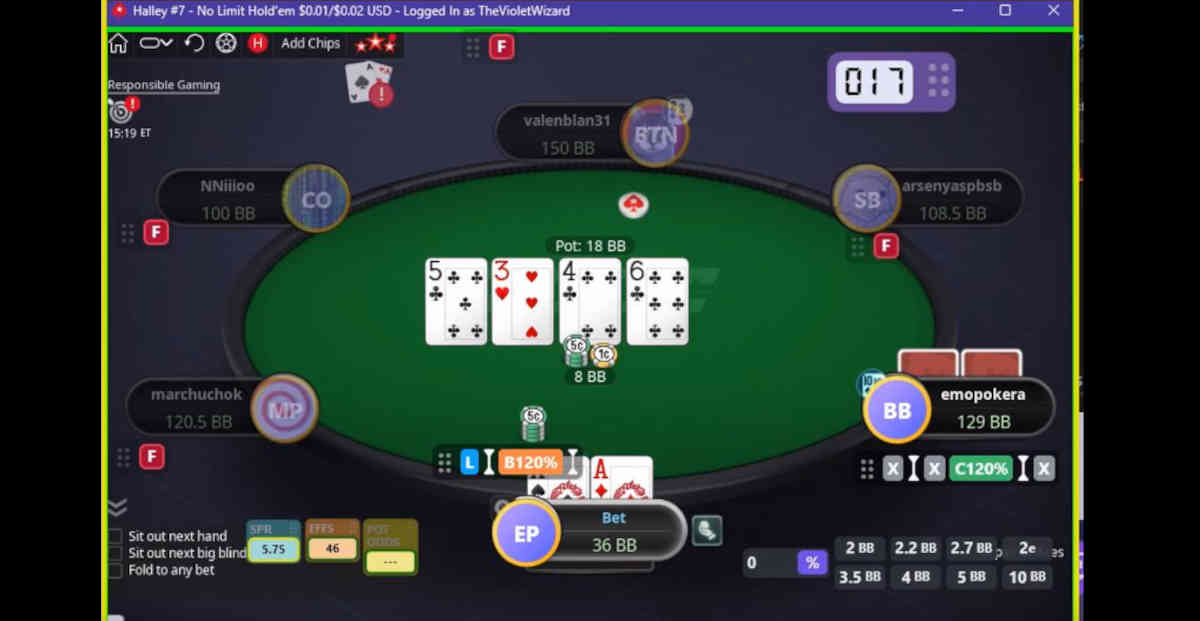
Geometric betting is often used by players these days to get all the money in by the river, either as a bluff or as a value bet, with players planning their future bets based on the size of the pot and the effective stack.
Calculating geometric bet sizing on the spot can be a bit difficult in real time. This is why poker tools like Jurojin Poker offer features that can help you choose the right geometric bet sizes on each street, making them very useful tools to have when playing online poker.
Bet Sizing Tip #5 – Standardize Your Bet Sizes
Playing online poker, you will want to standardize your poker bet sizing and find a few good bet sizes that work in most situations.
Most online poker sites will allow you to bind a few bet sizes in your user interface and have them handy to use in future hands, with players often choosing sizes like 33%, 66%, and 75% of the pot as their preferred bet sizes.
If you want to have even more bet sizes readily available to you, a tool like Jurojin Poker will allow you to bind up to eight different bet sizes to hotkeys, allowing you to quickly size up your bets to your preference in each spot.
In either case, you should try to standardize your bet sizes and use the same percentages in similar situations to prevent giving away tells by making slightly smaller or bigger bets for psychological reasons.
Bet Sizing Tip #6 – Add Overbets to Your Arsenal
The concept of overbets is relatively new in poker, as such bets were rarely used in the past, either as value bets or as bluffs.
These days, however, poker solvers have shown us that overbets can be a great way to both bluff and get maximum value, depending on the board texture.
Typically speaking, you will want to make these large bets in situations where you have a range advantage and a lot more nut-type hands than your opponent.
For instance, imagine you 3-bet from the small blind against a cutoff open, and the board ran K♦J♠7♦. You c-bet the flop, and your opponent calls.

When the A♦ rolls off on the turn, it is an ideal time to fire out a large 125% pot bet, although many players might miss this spot.
The Ace on the turn gives you an advantage over your opponent, as you are still able to have all the AA, KK, KK, and AK combinations while most of these hands are no longer in your opponent’s range.
While your opponent may be slightly more likely to have QT in this particular spot, they will also have a ton of KQs, QJs, 87s, 99, and many other hands that have no choice but to fold to your turn bet.
Similarly, your opponent will be in a terrible spot if they hold a flush draw without an Ace, as the pot odds they are getting will not justify making a call. This will give you a chance to win the pot outright against hands that have a lot of equity against you, regardless of your particular holding.
Bet Sizing Tip #7 – Keep Stack Sizes in Mind
A big part of knowing how to bet in poker has to do with keeping an eye out for your opponents’ stack sizes and making your bets appropriate to the current scenario.
When playing against amateurs, you will often notice them making bets that make no sense in relation to their opponents’ stacks and even betting more chips than other players even have, expecting to get called and perhaps even play further streets.
Being observant of everyone’s stack and knowing exactly what you are trying to achieve with your poker bet sizing is a key part of being able to make bets that actually make sense.
The effective stack plays a massive role in how you should size up your poker bets, so make sure to always be aware of it and make bets based on this information.
Bet Sizing Tip #8 – Plan for Future Streets
Whenever you make a bet before the flop or on the flop, you should be considering future streets and have a good idea of what you want to do when favorable and unfavorable cards peel off.
For instance, anytime you are thinking about your flop c-bet sizing, you should think about what you want to achieve with that bet, but also how you will act if you get called and have to play future streets.
There is nothing worse than making a large flop c-bet and then being completely dumbfounded when a turn card peels off, and you are asked to make a decision.
Instead, try to think about poker betting strategy as a whole and decide on your potential turn and river bet sizes early so that you can play the hand with a reasonable strategy and in a sensible way.
Bet Sizing Tip #9 – Size Up Against Calling Stations
While playing a balanced poker bet sizing strategy is generally a good idea, there are also times when you want to deviate from this strategy quite a bit.
The reason, of course, is that many poker players don’t play anywhere near GTO and will make terrible mistakes against you.
When playing against a player who calls almost any bet on early streets, the so-called “calling station,” you should employ a strategy of rarely bluffing and betting very big with your made hands.

Instead of going for a 30% bet on an Ace-high flop when you hold AK, go for a full-pot bet and watch them call you off with their bottom pair, hoping to spike that miracle card on the turn.
Large bets against these types of opponents, especially in live poker games, will get you your desired results and allow you to win a lot more chips than you would against more reasonable opponents in the same situation.
Bet Sizing Tip #10 – Don’t Advertise Your Hand
Assuming you are playing against fairly competent players, you should be careful not to choose bet sizes that advertise the strength of your hand.
It can be all too easy to bet too small or too large when you are bluffing, allowing your opponent to catch on to what you are doing.
Instead, you should try to play a balanced poker strategy in most cases and adjust your betting frequencies rather than your bet sizes.
Make sure to include some bluffs and some value bets into both your small and big bet sizing, and especially remember to mix it up when playing against particularly strong opponents who will find ways to exploit your tendencies if you let them.
Bet Sizing Matters More Than You Knew
Bet sizing is a key concept in poker, both live and online and one of the most overlooked skills by inexperienced poker players.
By learning how to size up your bets and when to use different sizes, you will allow yourself to win more pots, bluff out more opponents, and get value more often, eventually leading to a massive increase in your EV.
The next time you play poker, try to play less robotically and adjust your bet sizing to the different board textures, opponents, and stack sizes, and you will notice things going your way, one small step at a time.











